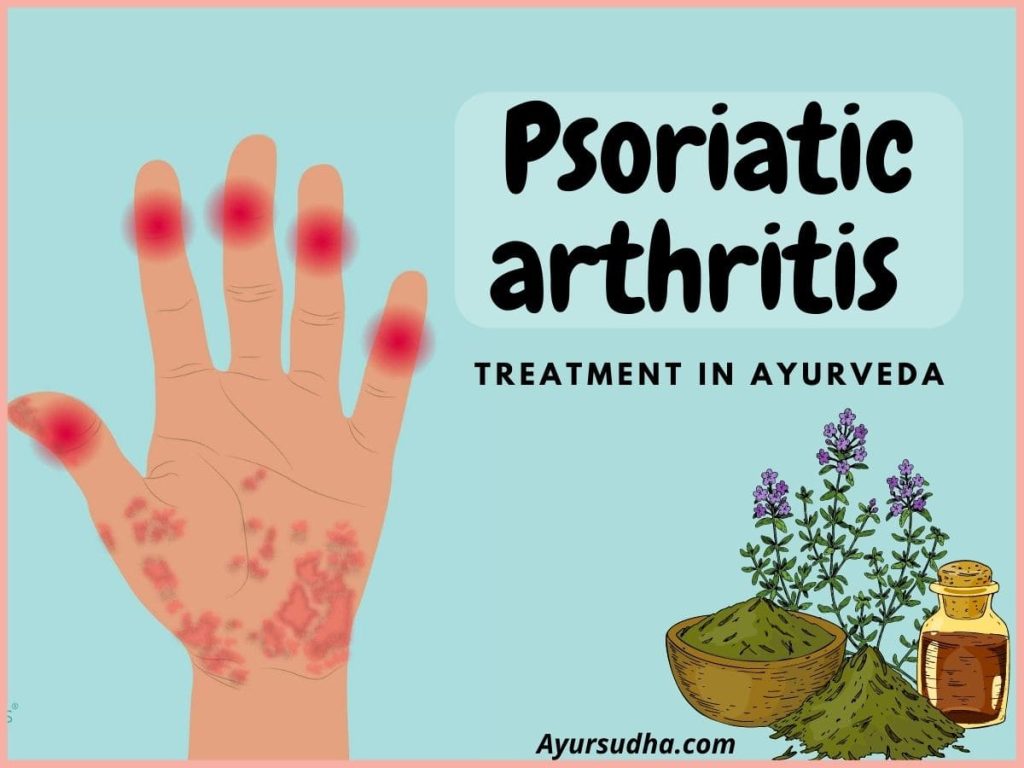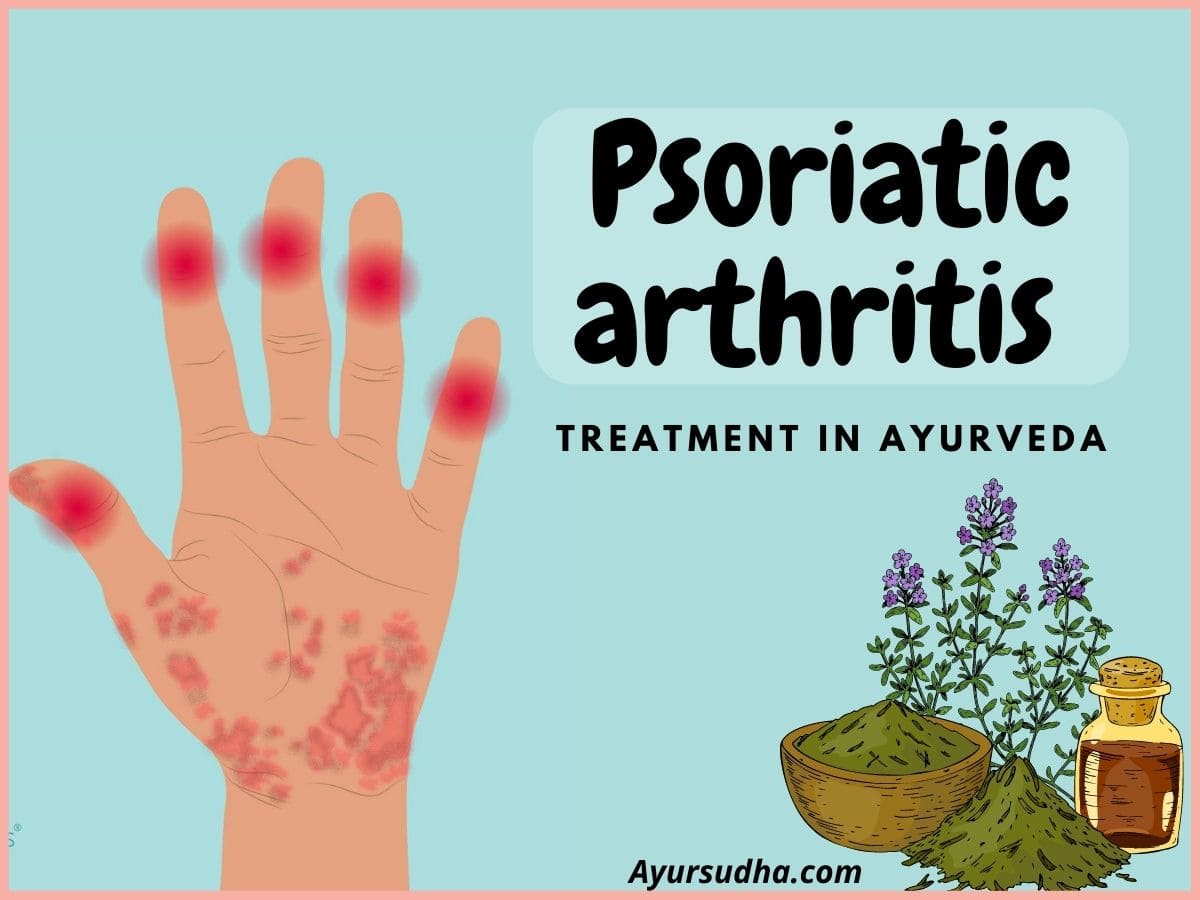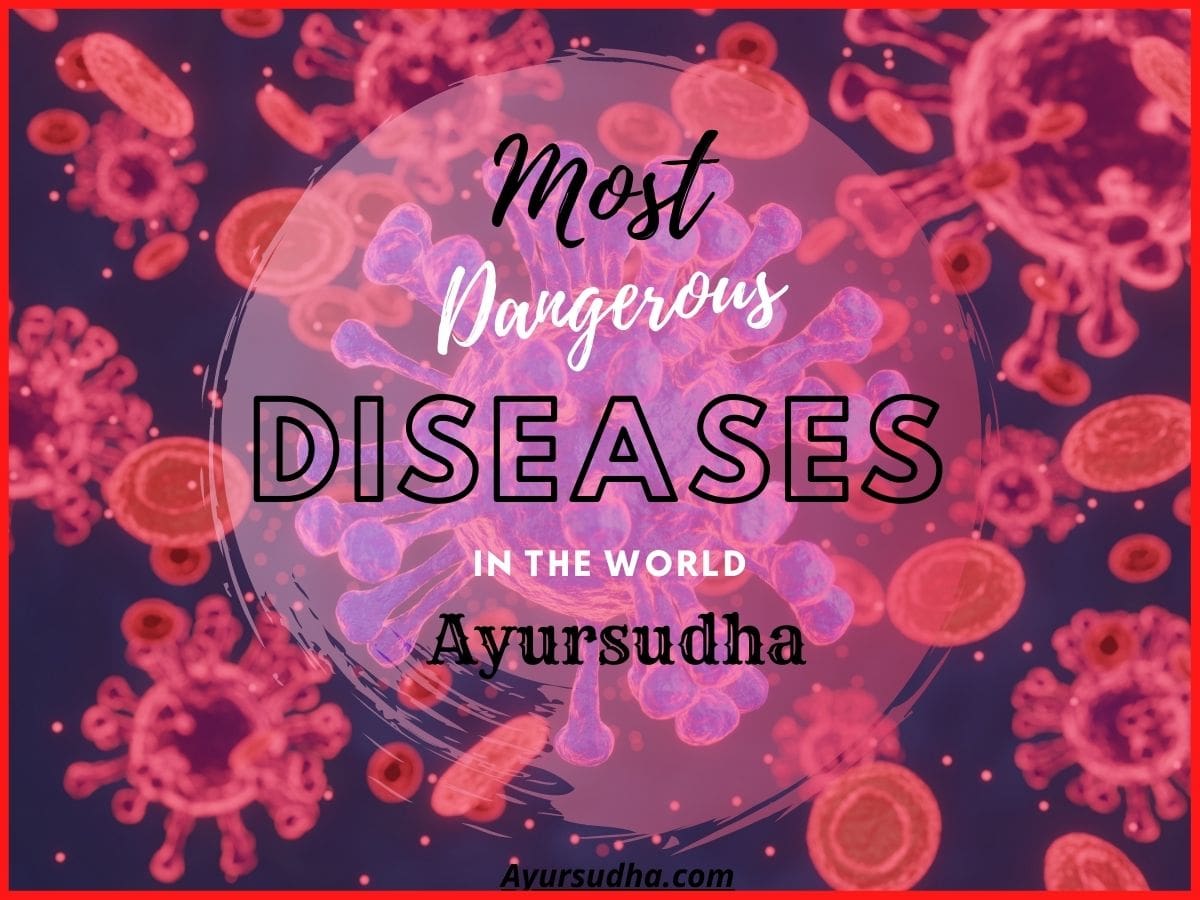People with psoriasis are more likely to develop psoriatic arthritis than other types of arthritis. Red patches on the skin and scalp are a symptom of psoriasis.
Psoriatic arthritis, often known as Psoriatic arthritis treatment, is an autoimmune form of arthritis that causes skin patches that are red and itchy in addition to joint inflammation.
Psoriatic arthritis treatment in Ayurveda Psoriatic arthritis first affects your skin, and only later do you start to show signs of arthritis. Rarely, joint issues can develop before the onset of skin patches. Common symptoms of psoriatic arthritis include pain, stiffness, and swelling in the joints. Your fingertips are just one example of the small or large joints that PsA can affect. Less frequently, it can also affect the spine. The symptoms may appear and then go away, much like with psoriasis.
Since there is no known treatment for psoriatic arthritis, ayurvedic medicine focuses on minimizing symptoms and avoiding joint deformities. In the absence of treatment, psoriatic arthritis may make it difficult to move.
Symptoms And Signs
- Skin: Patches of itchy skin that appear red or white because of an accumulation of dead skin cells. Psoriatic arthritis treatment in Ayurveda Elbows, knees, and the scalp are the areas of the body that are most frequently affected, however rashes can arise anywhere on the body. Psoriatic arthritis treatment There is a widespread misconception that these patches are contagious, however, this is untrue.
- Lower back discomfort: People with PsA may have lower back discomfort. Spondylitis, a complication of psoriatic arthritis, results in inflamed joints between your spine’s vertebrae and the joints connecting your spine to your pelvis.
- Foot discomfort: Plantar fasciitis, which is pain at the places where the tendons and ligaments join to the bones in the foot (usually at the back of the heel or in the sole).
- Nails: Some of the typical indications of PsA include nail lifting, white patches, and cracking.
- Joint pain: If you have joint pain, moving your hands and feet may be difficult. Both sides of the body may experience pain and tenderness as a result of peripheral arthritis. You can experience swelling in one toe or finger, making it challenging for you to grasp objects and bend. Dactylitis is the term for this.
- Fatigue. Due to the inflammation of the joints, psoriatic arthritis frequently causes fatigue and fever. During times of remission, symptoms sometimes worsen. Days or months may pass before the flare ends.
Psoriatic arthritis treatment in Ayurveda:

According to Ayurveda, Vata imbalance, rakta (blood), and kushta (energy) are the causes of psoriatic arthritis (skin disorders). The therapy of psoriatic arthritis, or Vatarakta, is thought to benefit from the use of ayurvedic Kushta Rogas.
Panchakarma therapy is typically employed as the primary ayurvedic treatment for Vatarakta. This therapy uses medicinal oils that are either consumed or used topically to cleanse and detoxify the body.
Psoriatic arthritis treatment in Ayurveda According to Ayurveda, this illness is caused by the vitiation of the three doshas—Kapha, Vata, and Pitha. The system’s primary pathogenic changes are caused by the accumulation of low-potency toxins or Dooshi vistas. The pathogenesis can be triggered by irregular eating patterns, high consumption of black grams, yogurt, sour and salty foods, and seafood. The use of smoke and alcohol serves as a trigger. Psoriatic arthritis treatment Ayurveda does emphasize the role that stress plays in disease.
Ayurvedic medicine focuses on the body’s detoxification or the removal of toxins from the body fluids. It can be obtained by “Panchakarma” therapies.
The following services are provided by Ayurvedic experts:
- Ghee eating should be medicated for the individual’s dosha type for 5-7 days.
- Detoxifying through inducing vomiting (Vamana) and purging (Virechana). Following this, medicated buttermilk is applied to the forehead in a process known as Dhara, and the body is then covered in mud and a medicine paste.
- For eight days, batches of medicinal enemas are administered.
- It is necessary to take internal medications, such as medicated ghee and herbal mixtures, for at least 90 days.
You may already be familiar with some of the herbs or other alternative treatments that ayurvedic doctors employ to treat psoriasis. They consist of:
- food choices. According to Ayurveda, psoriasis can be treated by drinking lots of water and eating green, leafy vegetables. Alcohol, red meat, spicy food, junk food, and acidic meals are among the foods and beverages that should be avoided.
- Turmeric. In ayurvedic medicine, this vivid yellow-orange spice is used to treat psoriasis. Numerous studies demonstrate the anti-inflammatory and antioxidant capabilities of turmeric, which protects cells. Turmeric can be consumed through food, such as curries, or as a supplement.
- oil of olives: To relieve dryness and irritation, you can either directly apply this to psoriasis spots or mix it into a bath.
- dairy thistle: Because it improves the function of the liver and immune system, according to ayurvedic doctors, this plant reduces the symptoms of psoriasis.
If the patient adheres to the treatment plan prescribed by our Ayurvedic doctor and changes their lifestyle, Psoriatic arthritis treatment they can get rid of their psoriasis. Strict dietary guidelines must be maintained during the whole therapy duration. Psoriatic arthritis treatment in Ayurveda Restricted foods include black gram, yogurt, chilies, and salted foods. Avoid eating frozen or refrigerated meals. People need to maintain their mental serenity.
Ayurvedic Kit for Psoriatic Arthritis –
- 60. Cap Herbal Defense
- 60. Cap Rest Artho
- 60. Tab Mahayograj Guggulu
- 300 gm Joint Aid Granules




